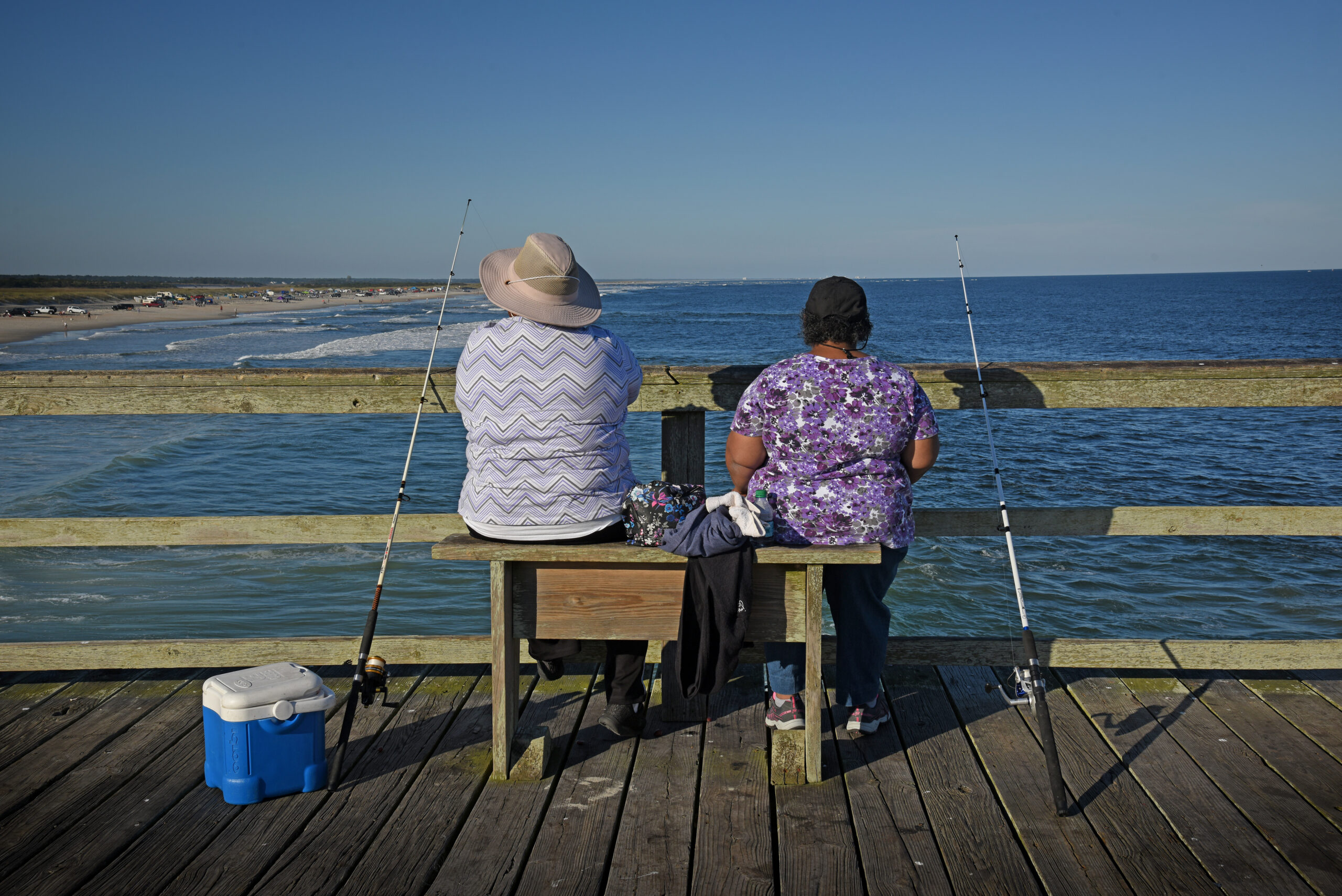Over 1,300 anglers have all the answers.
Research Need
Recreational anglers always have their “honey holes” — places where conditions are ideal for catching fish —from the leading edge of a hump to a bend in a channel. Limited information exists, however, about how and why anglers use various types of fish habitat.
Resource managers need this type of information to improve restoration and conservation.
What did they study?
A research team measured the benefits that coastal ecosystems offer anglers. They surveyed 1,323 people about how they make choices to maximize their well-being, as well as what influences those decisions.
The study took place in 2021 at the Middle Peninsula of Virginia (the six counties that lie between York and Rappahannock rivers). Habitat types in the study included: beach or sandy shoreline; man-made bottom structure (e.g., artificial reefs, bridge or pier piles); man-made or artificial shoreline structure (bulkheads, rock or riprap revetments, seawalls); marsh or living shoreline; open water; oyster reef or other natural hard bottom; and seagrass bed.
The research team also conducted several analyses, including an estimation of anglers’ “willingness to pay” for recreational fishing trips to different types of fisheries habitat.
What did they find?
The annual average number of recreational fishing trips that anglers took was about 19, with almost 69% fishing from private motorboats. They most frequently targeted these species, in order: striped bass, croaker, spot, red drum, and spotted seatrout.
Respondents reported fishing in a variety of locations, including waters around the Middle Peninsula (88%), the Chesapeake Bay (54%), rivers and small bays outside of the Middle Peninsula region (37%), and the Atlantic Ocean (15%).
Just over 72% of anglers reported visiting three or fewer habitats during the year. They also ranked the importance of different habitats in supporting healthy recreational fisheries as “extremely important” or “very important” most often for marshes and living shorelines (89%), followed by seagrass beds (86%), oyster reefs or other natural hard bottom (83%), open water (71%), human-made bottom structures (68%), beaches or sandy shorelines (62%), and human-made shoreline. structures (48%).
The reasons behind rankings of importance most often included “access to food/forage” (slightly over 90%), “spawning/breeding areas,” and “protection from predators” (each slightly over 80%).
Anything else?
Anglers reported relaxation, time with friends and family, and being outdoors as the primary reasons for fishing recreationally. Individual trip expenditures, one-way travel times, and total trip costs differed across habitats and how anglers chose to fish.
The research team determined that marshes and living shorelines in this region produce $6.42M in annual benefits associated with recreational fishing — over three times greater than the same type of benefits that hardened shorelines provide.
So what?
Coastal marshes and living shorelines generate considerable benefits to recreational anglers due to frequent use, low visitation costs, and anglers’ high willingness-to-pay to access them.
Marsh restoration and living shoreline projects mostly focus on water quality benefits, due to the limited availability of information on other services and benefits that coastal habitats offer. This study demonstrates how more information about the benefits of coastal habitats can aid in management decisions, advancing our understanding of natural coastal assets.
Reading
Scheld, A.M., Bilkovic, D.M., Stafford, S., Powers, K., Musick, S., and Guthrie, A.G. (2024) Valuing shoreline habitats for recreational fishing. Ocean and Coastal Management, 253: 107150.
This research was funded by the National Oceanic and Atmospheric Administration Chesapeake Bay Office Award #NA21NMF4570524.
Lead photo: Anglers fish off Carolina Beach Pier. Credit: NC State Photos.
The text from Hook, Line & Science is available to reprint and republish at no cost, but only in its entirety and with this attribution: Hook, Line & Science, courtesy of Scott Baker and Sara Mirabilio, North Carolina Sea Grant.

- Categories:




